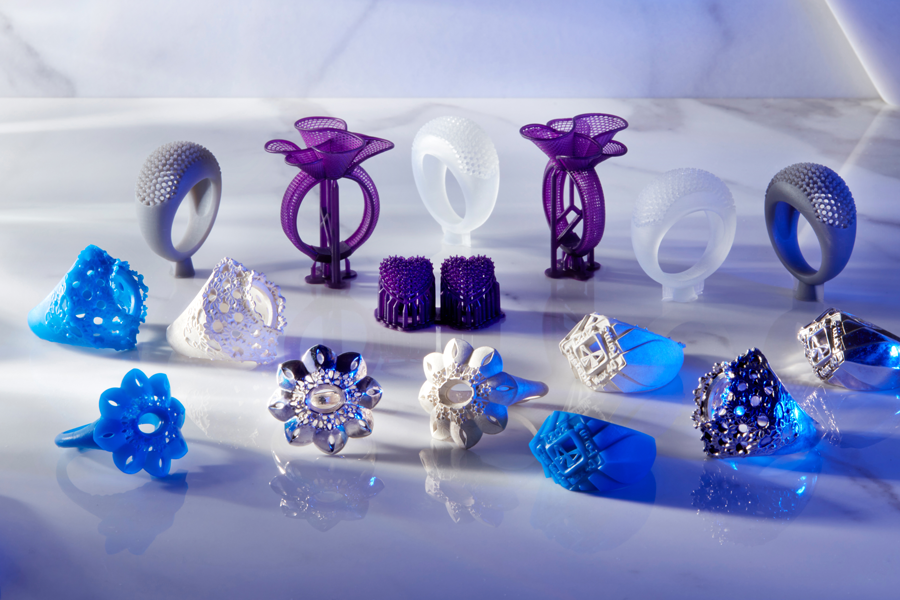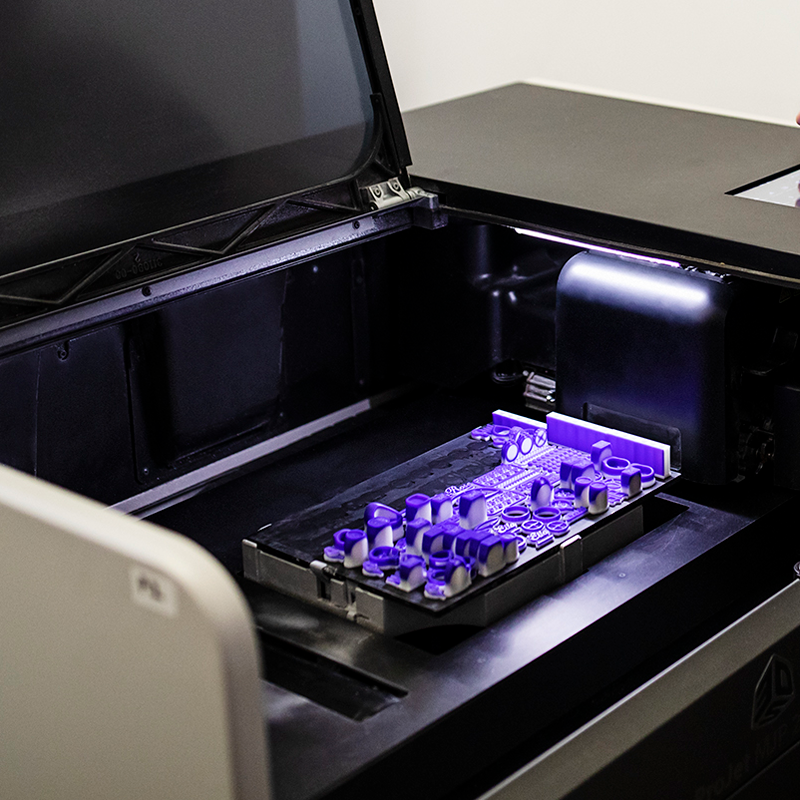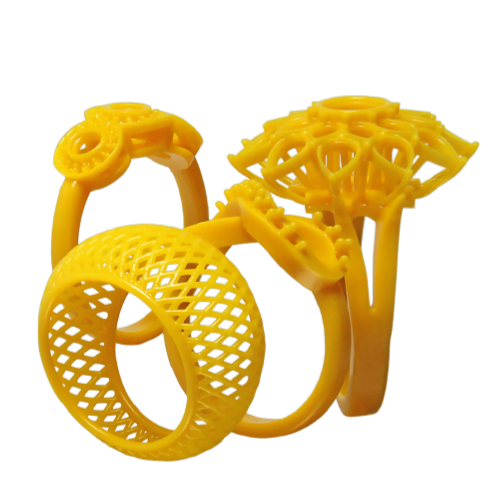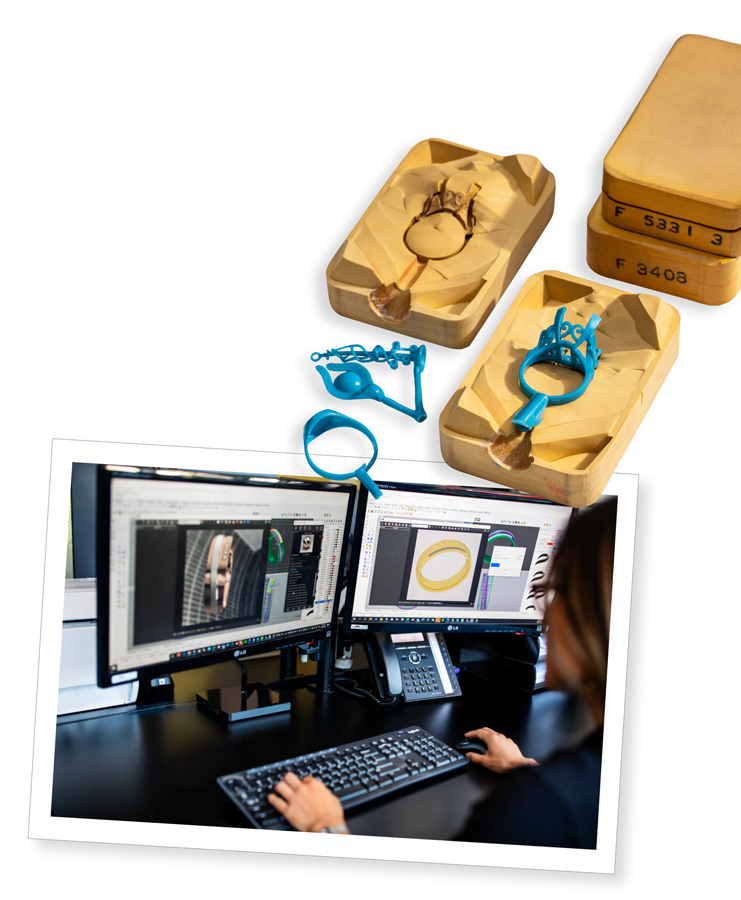 Perhaps the most significant change in the jewellery industry in recent decades has been the adoption of CAD/CAM - computer-aided design and computer-aided manufacturing.
Perhaps the most significant change in the jewellery industry in recent decades has been the adoption of CAD/CAM - computer-aided design and computer-aided manufacturing.
Once, the words ‘CounterSketch’ and ‘3D printer’ might have been met with a confused or dismissive look. Indeed, when Jeweller published its first CAD/CAM Guide in 2012, it asked the question, ‘Is CAD/CAM here to stay?’
Today, nearly a decade later, the answer is assuredly yes.
By the time Jeweller published its 2014 Report, the “CAD/ CAM revolution” had well and truly begun, and four years later, the technology was “synonymous with jewellery design”, while 3D printers had entered the market.
The financial limitations that once confined CAD/CAM to larger companies rapidly fell away as technology evolved, and new, jewellery-specific products and programs entered the marketplace, leading jewellers of all stripes – the pure retailers, outsourced-manufacturing, and in-house manufacturing – to embrace the benefits.
Chris Botha, operations manager at Palloys – part of the Pallion Group – was a vocal early proponent of CAD/CAM.
Reflecting on the evolution of the technology, he tells Jeweller, “CAD and CAM technology has evolved from a volume production tool to a fundamental production tool in any sized jewellery business. Only a few years ago, CAD required extensive training and practice.
“Now there are many more user-friendly, lower-cost options available for users.”
Botha notes that the upward trajectory of CAD/CAM has gathered pace since Jeweller’s last CAD/CAM Report, more than three years ago: “There has been a substantial increase in jewellers using CAD and CAM technology since 2018,” he explains.
“We have seen a shift in our casting cycle, from approximately 30 per cent CAD and 70 percent wax injections or customer- supplied material. Now, CAD is up to almost 45 per cent. It’s incredible to see, and to see it happening so quickly.”
Larry Sher, director Chemgold, points to the increasing number of jewellers and retailers investing in CAD software for ‘in-house’ use, explaining that Chemgold’s customers “take advantage of CAD-based libraries they can order, such as our JewelMount collection.”
To account for the increasing demand for its manufacturing services, Chemgold has significantly invested in staff training and customer service systems over the past three years.
David Gabriel, director Lenrose, says the CAD/CAM sector is expanding “exponentially almost by the month”.
“The number of jewellers that are now using CAD is massive; it’s probably easier to put a figure on those who are not using CAD – I’d say that fewer than 10 per cent of jewellers are not using it.”
He adds, “Many have jumped all the way in and are doing their own design, have purchased small resin printers and send their resins to us for casting.
“Others are doing their own CAD and then sending the files to us for printing and casting, while others simply brief us and allow our team to do the design, print and cast.
“So it very much depends on the individual jeweller.”
Abraham Tok, operations manager at Tok Bros, estimates “at least 75 per cent of the industry is using CAD/CAM in some way, shape or form”.
“Our feedback shows that there are relatively few jewellers still hand-making pieces out there compared with the past. However, the skills of the master jeweller are still needed – they are just utilised differently and at different stages.
“That’s why we say that a bench jeweller makes the best CAD designer, because they can visualise how a piece is to be made before clicking away at the software,” Tok explains.
Similarly, at Chemgold, Larry Sher observes, “It’s interesting to note handmade jewellery is still going strong as our stockgauge and solder sales have increased.
“For Chemgold, it’s fantastic to see traditional bench and new technology being used side by side.
He adds, “Handmade will always have a place, but it is important to utilise advances in technology. Jewellers benefit by viewing CAD/CAM as another tool at their disposal to save time, money and simplify the process in manufacturing.”
 |
| Above: A selection of resins from Formlabs. |
Changing attitudes
Indeed, it appears CAD/CAM has largely overcome many of the early prejudices which hampered its adoption both in Australia and overseas.
Where CAD/CAM costs were once prohibitively high, they have since fallen to manageable levels for most businesses.
These costs are also offset by reducing the labour involved in manufacturing each piece.
Additionally, CAD/CAM expedites the design and prototype process so that consumers can receive an accurate model of their future piece, as well as allowing jewellers more creativity and flexibility – leading to increased sales conversions.
Shawn Montgomery, executive director of business development – global software and CAD/CAM services at Stuller, says, “Everything from software to hardware is becoming more user-friendly and it is now easier to successfully cast, prep, set and polish jewellery.
“Digital manufacturing is not just at the large manufacturers level, it’s now at the independent jeweller level – just like carved waxes were executed in the ’80s and ’90s.”
He adds, “On the CAD side – those that choose to let someone else manufacture the CAD file – we are seeing an even more rapid acceleration in jewellery stores, [custom] jewellers and e-commerce-only jewellers use this technology to enhance the shopping experience.”
Larry Sher notes, “Overall, the attitude toward the technology has improved and become more positive as it continues to become more mainstream.
“With custom fine jewellery being a continued trend, jewellers and jewellery retailers are increasingly seeing CAD/ CAM as a tool they can utilise to improve their business.”
Adds Tok, “Our customers were understandably hesitant at first as it was new technology.
“But once they saw how it works, the accuracy, the cost savings and the elimination of guess work thanks to ‘photo- real’ 3D renders, the acceptance of CAD/CAM has been widespread and in our view it is seen as the ‘new norm’ for manufacturing high-quality custom-made jewellery.”
Gabriel echoes that sentiment, telling Jeweller, “CAD is the future. We have said that for many years now, but as time goes on it becomes more entrenched in the everyday life of a jeweller.”
He adds, “It is a very competitive market and jewellers only have two hands, so they have realised that CAD/CAM is an amazingly cost-effective way for them to increase their own production and grow their business.”
However, some CAD files can be difficult to cast – and if there are problems and multiple casts are made, costs can creep up. One solution is to select a casting house with a high level of expertise.
“Our team of precious metal specialists and engineers use the most advanced technology and experience to review the integrity of the file and ensure it has every chance of printing and casting the first time,” says Chemgold’s Larry Sher.
“We understand that quality, personalised service, consistency and attention to detail are the most important factors when meeting the needs of jewellery production from CAD/CAM.”
Palloys’ Botha adds, “The Design & Print team at Palloys has grown considerably and is proficient in all major CAD applications, and we can work with your files created in MatrixGold, RhinoGold, 3Design and JewelCAD.
“We can also work from a PDF, sketch, photo or logo for the most streamlined, efficient CAD service.”
The Palloys.com platform – relaunched in 2020 – also includes an STL file uploader and can provide instant quotes based on the CAD design, ensuring costs are manageable for the jeweller and customer.
Technology innovations
 |
| Above: Wax extrusion printer. Image credit: Palloys |
As CAD/CAM technology has matured, innovations have been incremental, centred on making software interfaces more accessible, as well as improving the affordability, accuracy, and efficiency of existing products, rather than drastic change.
“Jewellers are becoming increasingly aware of the quality we can produce from CAD. Our leading technology resin and wax printers ensure customers receive the absolute best surface finish from their CAD files, along with the highest quality castings,” explains Darren Sher.
Says Tok, “[At Tok Bros] since 2018, we have updated our fleet of 3D printers and fine-tuned the resins that we use to achieve a smoother print and cast surface finish.
“We have also improved the quality of our rendered images to eliminate as much guesswork as possible – these images are then used by jewellers with their customers and on their social media accounts.”
Gabriel has observed a “proliferation of much smaller – and therefore more affordable – resin printing machines” which have enabled jewellers to produce their own high-quality resin prints; “Previously, we needed hugely expensive machines to achieve this quality,” he adds.
Meanwhile, improvements in resins have also become a focus for the sector.
In January 2021, Formlabs – a 3D printing technology developer and manufacturer based in the US – introduced Castable Wax 40 Resin, which was developed with the Gemological Institute of America (GIA) and international jewellery findings, tools, and equipment supplier Rio Grande.
Formlabs noted in a statement, “The introduction of Castable Wax 40 Resin further demonstrates that the next era of 3D printing won’t be driven by hardware, but by materials.”
David Lakatos, chief product officer at Formlabs, added, “The advancements happening in material science are utility and versatility. When revolutionary materials are combined with the unique structures 3D printers can create, the end products better meet the needs and expectations of consumers.”
Castable Wax 40 Resin – a 40 per cent wax-filled material – is designed to produce results “similar to blue carving wax, the traditional material used in lost wax casting,” according to Formlabs.
Gabriel has observed an “explosion in availability” of different resins: “Most resin suppliers are searching for the ‘Holy Grail’ of a material that behaves like a resin when printing and like a wax when casting.
“This is an ongoing quest and the results are varied; it becomes the problem of the casting house to work out how to best cast these various new materials.”
At Chemgold, Darren Sher notes, “Improved technology in printing allows finer and more intricate pieces to be printed and cast easily, when using the correct software and machine.
“An increased number of lower-priced 3D printers are entering the market, which are suited to jewellery businesses that want to view the prototype before production or be able to print the wax or resin themselves and send to us for casting.”
However, the majority of Chemgold’s customers still prefer to send CAD files for printing.
Larry Sher explains, “In the last three years we have purchased numerous wax jetting printers which have a better surface finish and are faster in production, allowing us to have more throughput.
“We have also purchased many more DLP [digital light processing] printers, which enable us to print a wider range of materials. This has made us far more versatile where we have all the technologies for 3D printing jewellery, including SLA [stereolithography].”
At Palloys, Botha says 3D printing is now “much more accessible and convenient for all users”, explaining, “We have seen advancement from FDM [fused deposition modelling] to DLP printers, and now LCD [liquid crystal display] printers are available, and more importantly, affordable.
“More and more jewellers are experienced with the technology, it is fantastic seeing the industry progress digitally.”
In addition to resin and wax printers, Lenrose also makes “extensive use of 3D scanning to further enhance the quality of CAD designs”.
Best-known for its use in motion-capture for films and TV, as well as medical prosthetics manufacturing and robotics, 3D scanning is increasingly being applied to jewellery in order to generate digital models of real-world pieces.
Some of the most common applications include scanning unusual engagement rings to design a perfectly flush wedding band, creating accurate settings for fancy-cut gemstones, and replications of existing jewellery.
The technology is also useful for jewellers who wish to keep 3D files of stock for insurance, record-keeping, and valuation purposes, or to identicaly replicate a customer’s jewellery, should the original be lost or stolen.
In terms of design, Stuller’s Montgomery names MatrixGold as the “mainstream CAD software for the serious CAD designer worldwide”, calling it “the most effective jewellery design software on the market”, suitable for designing completely custom pieces ready for printing and casting.
At Palloys, jewellers can create a custom design from scratch via the Palloys.com platform or upload an STL file with their design. The Palloys Design team is also able to create custom renders for jewellers to use as a sales feature: “Bringing a life-like element to the design is an imminent part of the selling process. Rendering in the modern age is of such a quality, it could almost pass as life-like,” says Botha.
Looking to the future of CAD/CAM, Tok believes small improvements will likely continue until the next “giant leap forward” – direct 3D printing in precious metals.
Chemgold’s Larry Sher agrees, noting, “We are constantly looking at new technology such as direct-metal printing. This could also be an option in the near future if it becomes economically viable. Currently the machines are extremely expensive to run and the quality is not at the standards required.”
From the days of sketches and handmade models to 3D scanning and direct metal printing, CAD/CAM reflects the changing nature of the jewellery trade as well as the rapid pace of change across all industries and ways of life.
 |  |
| Above: Envisiontec Easy Cast 2.0 wax has a 90 per cent liquid wax content and is developed exclusively for use in Envisiontec 3D printers. | Above from Right to Left: Moulds of wax cast designs; Computer- aided design in action. Image credits: Palloys |
SPOTLIGHT ON
3D SCANNING |
One relatively recent innovation in the CAD/CAM sector is 3D scanning. The scanner creates a digital 3D model of a real-world object which can then be used as the basis for future designs. David Gabriel, director Lenrose, explains the process: “We apply a non-reflective coating to the object that is to be scanned that does not damage the piece. This allows the scanner to register and scan the surface. The scanner uses a very soft light source to scan, and there is no damage at all to jewellery or gemstones. “In general any piece of jewellery or gemstone can be scanned but as with every process there are size and geometry limitations.” Gabriel says preparing pieces for scanning usually takes longer than the scanning process itself, which he estimates is about 15 to 20 minutes per piece. “We started scanning about three years ago,” he continues. “The benefit to our customers is that we can better produce CAD models to their exact specifications. Many gemstones have unusual shapes, so we scan the gems and then produce CAD models that fit the gemstones exactly.” He adds, “When fitted wedding bands are required it is much easier to scan the engagement ring and simply CAD the fitted band to suit – you just know it is going to fit perfectly every time. There are so many varied applications; it really makes life for everyone so much easier. It has really been a tremendous advantage to us and allowed us to take on more complex jobs that otherwise would have been impossible to do.” |
read emag